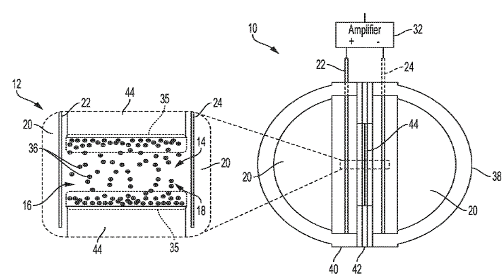
Electro-mechanical transduction is achieved when the ionic fluid is acoustically or electrically excited within the device’s capillaries
Invention Summary:
Sound generating devices have varying applications in fluidic and soft tissue environments; including speakers for private and recreational swimming pools, medical diagnostic (ultrasound) devices, and deep-sea signaling applications. Typically, sound generating devices create pressure waves by mechanical deflection of electromagnetic or piezoelectric elements at discrete or limited resonant frequency bands. The deflecting elements in these devices deteriorate over time; a sound generator without these sensitive moving parts will lead to a more robust and broadband device.
Researchers at Rutgers University have developed a new type of sound generator in the form of a transducer array capable of generating sound without the need for a vibrating solid object or membrane. This sound generator creates acoustic waves in fluid directly by harnessing the versatile frequency response of the electroosmotic effect.
Market Applications:
- Underwater acoustic transduction applications (SONAR, communication, etc.)
- Acoustic cloaking
- Medical devices
Advantages:
- Generates sound without moving parts
- Broadband frequency range that is linear with applied electric field
- Can be used as sensor and projector
Intellectual Property & Development Status: Patent published. Available for licensing and/or research collaboration. For any business development and other collaborative partnerships contact marketingbd@research.rutgers.edu.